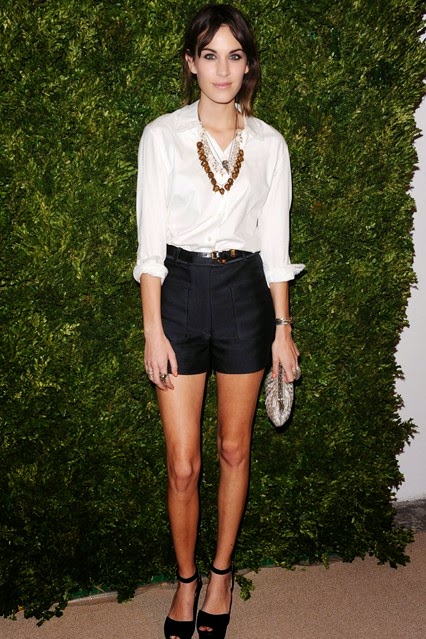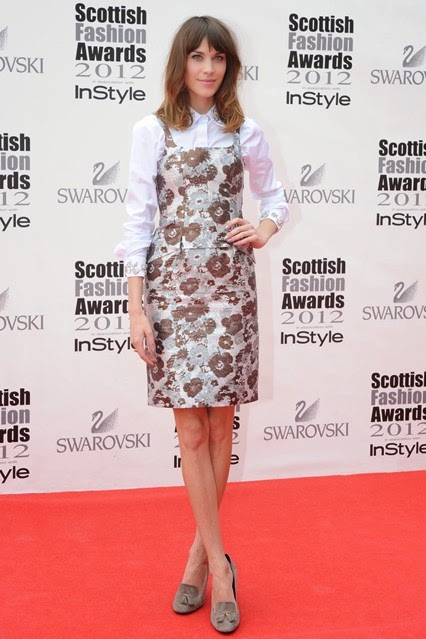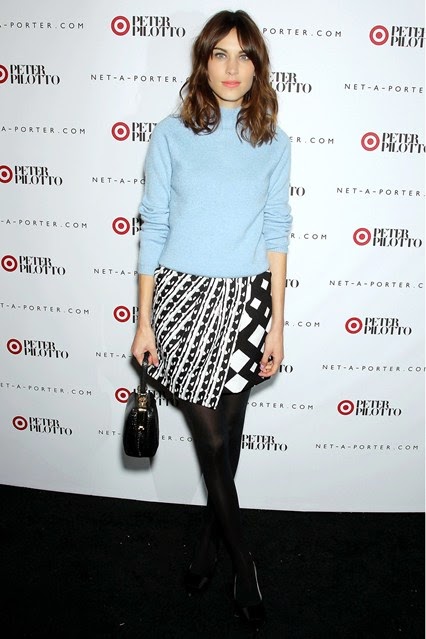She's dressed everyone from Lauren Bacall to First Ladies. Now, Betty Halbreich - the most famous personal shopper in the world - just wants a drink.
Being a sales associate for the past four years, many of Halbreich's stories and sentiments resonate with me. It's quite an interesting adventure being a fashion therapist to the well-off, but similar to Halbreich, I've realized I'd rather be on the side I am than the other way around.
Not only has the retail experience helped cultivate my personal style and confidence about my wardrobe, but it's enabled me to ensure that same confidence and self-esteem to my customers. Clothes are a form of personal expression, but many people truly value (or need) the confirmation from a honest and engaged sales associate. While I know relatively quickly whether I want to add an item to my wardrobe or not, many women want to be sure that what they are trying on is the right item for them.
When you work in a speciality shop, with higher price merchandise, the path-to-purchase is more intimate and involved. You truly get to play "dress-up" with the customer and determine together which items will be heading home with them. Although (like every other store) we have sales targets, I never try to force a sale. I am a firm believer in having the customer look good in & be happy with what they are purchasing. Will they be able to wear it again? What can they wear the dress/blouse/trousers with? Will they be comfortable & confident when they wear the outfit?
It's very rewarding and such a treat to help women find a product or style that works for them. That, in turn, fosters customer loyalty and the proper engagement and reputation for your store to keep customers returning.
That level of involvement has enabled me to develop better social skills, cultivate relationships and learn more about personal styling & fashion. It's a beautiful blend of personal and professional growth.
I have yet to read Halbreich's memoir, but below you'll find a lovely book review from Lesley M.M. Blume with The Wall Street Journal.
Betty Halbreich has been privately famous for a long time. As Bergdorf Goodman's grande dame personal shopper, she has dressed the rich and powerful, the wives of the rich and powerful, and upon occasion, the merely rich for 40 years. Her clients have ranged from Babe Paley to Meryl Streep to Candice Bergen; she collaborated on the seismic looks for "Sex and the City"; President Ford once lingered in her office while Betty Ford selected her seasonal wardrobe. And she seems to have topographical expertise of every star and socialite in town.
Recently, however, this crowd has had to share Ms. Halbreich, 86, with the masses. In the 2013 documentary "Scatter My Ashes at Bergdorf's," Ms. Halbreich delighted audiences as a surprisingly salty mensch amidst a fantasy world of feathers, sequins and American ExpressBlack Cards. Lena Dunham, creator of HBO's "Girls," is now developing a television series inspired by Ms. Halbreich's life. The impatient, however, can satisfy their curiosity more immediately with "I'll Drink to That," the long-anticipated memoir in which Ms. Halbreich chronicles her life in the dressing room and beyond.
"I'll Drink to That" is, in reality, two interwoven memoirs: One details Ms. Halbreich's life as a sartorial Pygmalion to the social elite, while the other charts her road to this perch. "From childhood to child bride to a childish mother, I had always been taken care of," she reports. Born to a wealthy Chicago family, she married into a flashy hotel family and moved with her husband to New York. She and her female cohorts "shopped till we dropped . . . with an absence of other goals, clothes became our only markers for success."
Despite her enviable Bonwit Teller-and-Stork Club existence, Ms. Halbreich writes that, in those early years, she never quite fit into "the pressure-cooker style of fashion in New York" and found New York society "strange and aggressive turf." Although a voracious clotheshorse, she "had always marched to my own drummer when it came to dressing," turning sweaters backward, for instance, to distinguish herself from the crowd. Ms. Halbreich's unhappiness crescendoed as her husband's infidelities increased; she returned them in kind. Following a separation from her husband, Ms. Halbreich attempted suicide and then spent a period in a psychiatric institution.
Other women in Ms. Halbreich's circle tended to drown their sorrows in diamonds. She, on the other hand, pulled herself together and got a job. It was once said of former Vogue editor Diana Vreeland (whose career was also a later-life phenomenon) that she had more style than money, but turned the former into the latter. Ms. Halbreich similarly parlayed a deep knowledge of apparel, jewelry and social habits into a career in fashion, first at Geoffery Beene, and later at Bergdorf.
In "I'll Drink to That," this triumph feels every bit as exhilarating as Mary Tyler Moore's famous shift from peppy housewife to career girl, and Ms. Halbreich is quick to endorse the therapeutic qualities of work: The job gave her "self-worth, which was a new feeling for me . . . it was psychiatric heaven."Other women in Ms. Halbreich's circle tended to drown their sorrows in diamonds. She, on the other hand, pulled herself together and got a job. It was once said of former Vogue editor Diana Vreeland (whose career was also a later-life phenomenon) that she had more style than money, but turned the former into the latter. Ms. Halbreich similarly parlayed a deep knowledge of apparel, jewelry and social habits into a career in fashion, first at Geoffery Beene,and later at Bergdorf.
At Bergdorf, Ms. Halbreich quickly elevated herself above the floor, where selling was akin to a blood sport ("those women . . . would kill for a sale," she recalled). Once on salary and emancipated from the shackles of commissions, she turned personal shopping (a phrase she dislikes) into a "creative endeavor."
In this line of work, bedside manner is crucial. That said, "I don't flatter or make nice-nice," the author warns us. As for celebrities: "I do not fawn over them; it would make me uncomfortable and, I believe, them as well." She writes about her work with a fairly unsentimental (and at times, almost callous) tone, which perhaps should not be surprising given her daily proximity to vanity, vulnerability, unsolicited confessions and a wide array of workplace abuses. "Some," she writes, "believe that when they spend a lot of money, the sale automatically comes with a servant." Like a seasoned doctor, Ms. Halbreich has seen and heard it all (she even refers to her clients as "patients"). One senses that her nerves have long ago lost any rawness.
Despite the drama of Ms. Halbreich's personal life, her memoir is at its most interesting during the dressing-room scenes. Ms. Halbreich recreates dialogues with various names-concealed-to-protect-the-innocent clients, and the exchanges reveal Ms. Halbreich to be a shrewd navigator of tricky social-status situations as well as a fashion expert; these recounted sessions also belie the inherent strangeness of her profession. One client needs a subdued wardrobe for a holiday with a less wealthy friend; another woman with a terminally ill husband needs some retail therapy in anticipation of the grave event.
Yet these are targeted missions with specific solutions. Other clients do not merely implore Ms. Halbreich to suggest blouses and jackets; the faithful often flock to her searching for reinvention. Sometimes it's a matter of tweaking their identities. But others crave new ones entirely, and ask Ms. Halbreich—in a hand-of-God way—to assign them. One exchange had an almost existential quality: Presented with a silver-spangled shirt, a client protested, "It's not exactly me." Ms. Halbreich's response: "You don't always want to look like you." Even the most resistant clients, Ms. Halbreich asserts, "wind up deferring to me in the end"—including one woman who, during consultations, faces Ms. Halbreich instead of the mirror, "trusting and preferring my opinion over her own reflection."
Again, Diana Vreeland comes to mind: "Give 'em what they never knew they wanted," she once declared. This is precisely what Ms. Halbreich does—and very few have dared to say no.

























































